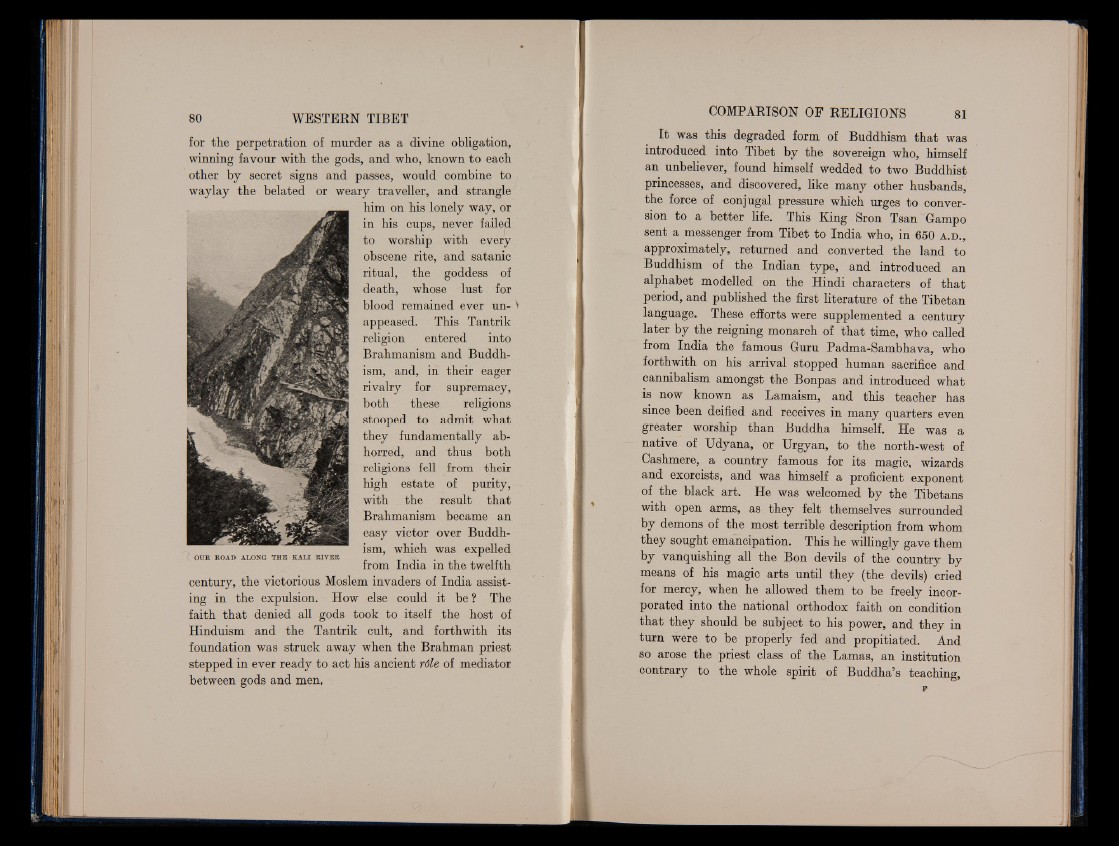
for the perpetration of murder as a divine obligation,
winning favour with the gods, and who, known to each
other by secret signs and passes, would combine to
waylay the belated or weary traveller, and strangle
him on his lonely way, or
in his cups, never failed
to worship with every
obscene rite, and satanic
ritual, the goddess of
death, whose lust for
blood remained ever un- 1
appeased. This Tantrik
religion entered into
Brahmanism and Buddhism,
and, in their eager
rivalry for supremacy,
both these religions
stooped to admit what
they fundamentally abhorred,
and thus both
religions fell from their
high estate of purity,
with the result that
Brahmanism became an
easy victor over Buddhism,
which was expelled
( OUR ROAD ALONG THE KALI RIVER . . - ipi from India in the twelfth
century, the victorious Moslem invaders of India assisting
in the expulsion. How else could it be ? The
faith that denied all gods took to itself the host of
Hinduism and the Tantrik cult, and forthwith its
foundation was struck away when the Brahman priest
stepped in ever ready to act his ancient rdle of mediator
between gods and men.
It was this degraded form of Buddhism that was
introduced into Tibet by the sovereign who, himsftlf
an unbeliever, found himself wedded to two Buddhist
princesses, and discovered, like many other husbands,
the force of conjugal pressure which urges to conversion
to a better life. This King Sron Tsan Gampo
sent a messenger from Tibet to India who, in 650 a .d .,
approximately, returned and converted the land to
Buddhism of the Indian type, and introduced an
alphabet modelled on the Hindi characters of that
period, and published the first literature of the Tibetan
language. These efforts were supplemented a century
later by the reigning monarch of that time, who called
from India the famous Guru Padma-Sambhava, who
forthwith on his arrival stopped human sacrifice and
cannibalism amongst the Bonpas and introduced what
is now known as Lamaism, and this teacher has
since been deified and receives in many quarters even
greater worship than Buddha himself. He was a
native of Udyana, or Urgyan, to the north-west of
Cashmere, a country famous for its magic, wizards
and exorcists, and was himself a proficient exponent
of the black art. He was welcomed by the Tibetans
with open arms, as they felt themselves surrounded
by demons of the most terrible description from whom
they sought emancipation. This he willingly gave them
by vanquishing all the Bon devils of the country by
means of his magic arts until they (the devils) cried
for mercy, when he allowed them to be freely incorporated
into the national orthodox faith on condition
that they should be subject to his power, and they in
turn were to be properly fed and propitiated. And
so arose the priest class of the Lamas, an institution
contrary to the whole spirit of Buddha’s teaching,